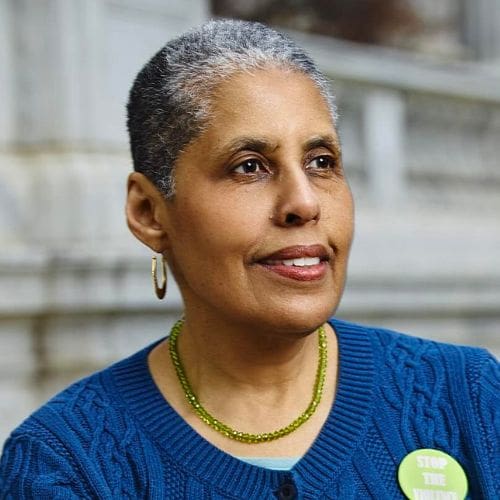Mondial Article (Winter 2023)
Climate Change Lawsuits Around the World

Bill Pearce
Called to the bar in 1968 and has had a varied career as a barrister. He is currently retired and living in Victoria while continuing to serve as President of the World Federalist Movement — Canada Victoria branch.
This article will examine the explosion of climate change litigation around the world and its role in reducing the output of greenhouse gases (GHGs) which is endangering the survival of our species. In 2017 there were 884 climate change lawsuits brought in 24 countries. By July 2020 this number increased to at least 1,550 cases in 38 countries (Stefer 2023).
Some of these lawsuits seek compensation for damage inflicted by fossil fuel-associated global warming and related extreme weather events. The most recent example is the case where the state of California is suing the major oil producers for billions of dollars associated with their deceptive practice of spreading misinformation as to the role of burning fossil fuel in the warming of the planet (akin to the denial tactics of the tobacco industry of the connection between smoking and cancer). In their attempt to hold the oil giants accountable they are looking for substantial compensation with regard to the industry’s 2022 profits which exceeded 200 billion dollars, double their profits in 2021.
In Peru, an indigenous Peruvian farmer, Saul Luciano Lliuya, who lives below a melting glacier, seeks payment for damages to his property associated with excessive GHG warming of the planet proportionate to German energy giant RWE’s overall contribution to global climate change of 0.47%.
The great majority of climate change litigation is not for the recovery of money but is associated with attempts by state actors, non-governmental organizations (NGOs) or individuals to seek court orders to force fossil fuel-producing companies to reduce emissions or to force nation-states to set lower emission targets or take more stringent measures to achieve emission targets. Most of these lawsuits rely on human rights legislation which protects the right to life and security of the person. In addition, the right to a healthy environment is often invoked. Sadly, Canada is among one of the few remaining United Nations Member States that does not constitutionally protect the right to a healthy environment.
Section 7 of the Canadian Charter of Rights enshrines the right to life, liberty and security of the person and the right to not be deprived thereof except in accordance with the principles of fundamental justice. This section may provide a mechanism to constrain the government’s ability to engage in activities that potentially may cause environmental harm which endangers Section 7 rights; this makes the Charter the closest thing Canadians have to a constitutional right to a healthy environment.
Before reviewing some of the recent leading cases of climate change litigation, I wish to note that, for the most part, there is agreement amongst all the judges around the world that have tackled the subject that global warming is caused in large part by human-caused burning of fossil fuels and is the cause of the extreme events we are witnessing almost every day. From these cases, I am driven to the conclusion that the reason for the outburst of judicial activism in this field in recent years is the fear that state actors and human beings are not acting fast enough to reduce our use of fossil fuels.
When judges come to the conclusion that state actors can’t be trusted to do what is necessary they often step up to the plate to make things happen. An example of that can be found in Leghari v. Federation of Pakistan. Leghari, a Pakistani farmer, convinced a judge that the “delay and lethargy of the State in implementing the Framework” offended the “fundamental rights of the citizens” with the unusual result of the Court stepping into the shoes of the State to oversee the execution of the policy, with directions for certain Ministries to take specified action, and with the appointment of a Climate Change Commission. Following years of monitoring the assigned tasks, the Court dissolved the Commission on being satisfied that the desired actions had been taken.
On May 26, 2021, the District Court of the Hague handed down a historic judgment that represents a new understanding of corporate responsibility in regard to the harm caused by corporate burning of fossil fuels and the resultant contribution to climate change. The case was brought by a number of NGOs and 17,000 citizens against Royal Dutch Shell. The Court concluded that Shell has an obligation to achieve in their operations a net 45% emissions reduction by 2030 compared to 2019 levels, in line with the Paris Climate Agreement. The Court acknowledged “RDS cannot solve this global problem on its own. However, this does not absolve RDS from its individual responsibility to do its part regarding the emissions of the Shell group, which it can control and influence.” This case stands for the proposition that state responsibility to reduce emissions is shared by individual major emitters of GHGs. It is presently under appeal.
Duty of care in the Shell case is based on the foreseeability test; tortfeasors will be held liable for damages they should have foreseen and could have mitigated. The Court found that Shell knew enough to foresee the damage its emissions were likely to cause, the certainty of which became clearer as time went on. In addition, it found that the Shell Group’s current share of global emissions to be approximately 1%.
The Court acknowledged that human rights law does not define human rights obligations on companies but that there is universal agreement that companies are bound to respect human rights. The Court also relied heavily on the UN Guiding Principles on Business and Human Rights, which obliges businesses to “prevent or mitigate any adverse impacts related to their operations, products or services” amongst other things, including “the obligation to institute a policy commitment to meet the responsibility to respect human rights due diligence to identify, prevent, mitigate and account for their human impacts.” It is noteworthy in this regard that Canada’s Bill C-262, respecting corporate responsibility abroad, which had its first reading on March 29th, 2022, states in para 6(1) that every corporation has a duty to avoid causing any adverse impacts on human rights from occurring outside Canada”. The definition of human rights in the Bill includes “the right to a healthy environment.”
To exercise due care in fixing its corporate policy, Shell was required to take into account the best available science and the broad international consensus of the destructive character of climate change based upon the right to life and undisturbed family life (embodied in the European Human Rights Code) enjoyed by the citizens of the Netherlands. Had it done so it would have decreased its emissions which contributed to climate change. The Court found that Shell had a direct obligation to amend its corporate strategy accordingly and went further to state that it has a best-efforts obligation to bring down the carbon footprint of its customers.
The case built upon an earlier decision in the Urgenda case where a Dutch NGO and 886 citizens sought a mandatory order that the state had failed to take greater steps to reduce emissions than what was required. The Court ordered the government to cut its emissions by at least 25% by the end of 2020 compared to 1990 levels and in so doing became the first court in the world to do so. It concluded that the Court had the jurisdiction to assess whether the measures taken by the State are too little in view of what is clearly the lower limit of its share of the measures that need to be taken worldwide to address a dangerous change in climate. On Apr. 24, 2020, the Dutch government announced its plan to comply with the historic ruling of the Supreme Court which resulted in a complete transformation of climate change policies in the Netherlands, underlying the impact court decisions can have in global efforts to mitigate climate change.
The Urgenda case was relied upon in part in the Ontario case Mahur v. Ontario released on Apr. 14, 2023. The case concerned the alleged inadequacy of the Ontario emission targets. The Paris Agreement which Canada signed contemplates a 45% reduction of emissions below 2010 levels by 2030. This resulted in the passage of the Canadian Net Zero Emissions Accountability Act echoing the same commitment with the provinces passing their own equivalent legislation.
Mahur sought a court declaration that the Ontario target was inadequate based on the scientific consensus and the court found that “Ontario’s decision to limit its efforts to an objective that falls severely short of the scientific consensus as to what is required is sufficiently connected to the prejudice that will be suffered by the Applicants and Ontarians should global warming exceed 1.5 degrees C. by not taking steps to reduce GHG in the province further.” The court found that the Charter issues raised were generally justiciable, meaning that there was a sufficient legal component to warrant intervention of the judicial branch.
However, the Canadian Charter of Rights is not open- ended like the European Human Rights Code which gives state protection for citizens’ rights to life and security of the person. In Canada, every person enjoys the right not to be deprived of those rights by the state. Positive rights are only inferred in special circumstances. In the Mahur case the Court declined to make a ruling on the central issue as to whether Mahur had been deprived of his charter rights having decided that he failed to demonstrate the deprivation of his s 7 right was ‘contrary to the principles of fundamental justice’, another requirement in our Charter which is different than the European code.
While the Mahur case was unsuccessful at the first level, it nevertheless recognizes the catastrophic effects of climate change and made important findings that might be built upon in future cases which have more compelling facts. That should not be difficult if we take a close look at Canada’s 2030 Emissions Reduction Plan and the section on oil and gas. The reason we look here is that in 2019 the oil and gas sector accounted for 26% of the nation’s emissions and the oil sands were by far the largest emitter. The Reduction Plan lays out all the projected production levels for each component of the oil and gas sector. For the oil sands component, they forecast a 2020 production level of close to 2 million barrels per day (bbl/d) and for 2030 it is over 4 million bbl/d which works out to a 69% increase in production.
The Plan also contemplates an increase in conventional oil for the same period of 33% and a lesser increase in natural gas. But when you go to the table which shows the emission projections for the entire oil and gas sector the emissions are projected to increase by just 4.5% when comparing 2020 emission projections to 2030. How does the Canadian government think it is possible to permit production levels of the dirtiest oil on the planet to go up 69% and permit other parts of the sector to go up appreciably but hold the rise in emissions to a mere 4.5%? The only meaningful reduction measure the Reduction Plan talks about is “advancing” carbon capture usage and storage (CCUS). This is the sole ‘magic bullet’ the Plan touts, which the increased use of will allow the oil and gas sector to meet its 2030 target. But an S&P Global Commodity Insight report last fall warned the Canadian government that the oil sands sector may have to throttle back production by up to 1.3million bbl/d to reach emissions targets and that even with abatement measures, including CCUS, a reduction of 800,000 bbl/d will be necessary, which represents a reduction from 2020 levels of 37.3%, as compared to the projected 69.3% projected increase. There is a disconnect. Something more has to be done to make it happen.
Furthermore, Canada has heavily subsidized the CCUS project which former Minister Catherine McKeena said recently that “incredibly…the oil sand companies demand that Canadian taxpayers spend even more to subsidize their carbon capture projects”, to which I would note the Canadian government made a commitment in the Reduction Plan to eliminate fossil fuel subsidies altogether. A good starting point, if the government wants to be serious about meeting its targets, would be to declare an end to oil and gas subsidies altogether, and place a cap on oil sand production levels to be 37.3% below present levels.
Catherine McKenna points out the obvious that “time is running out”. She tells us UN Secretary-General Antonio Guterres put it best when he said “investing in new fossil fuels infrastructure is moral and economic madness” and “Real action-and a hard cap on oil and gas emissions is needed now”. It is also time to regulate the industry to green up its products. A good start would be to mandate the use of green sources of energy to separate the oil from the sand. John Vaillant calculates that a full one-third of Canada’s natural gas production is used for that very purpose. Such action would not only take the industry a long way to meet its targets but would make its oil sand much more saleable in world markets as having a GHG equivalent to conventional sourced oil. As it stands, if operations do not change and the oil sands expand as projected the amount of natural gas used to separate the oil from the sand will exceed 50% of present production levels. That is simply immoral.
Thus far, the oil industry has been treated like a sacred cow and most of the major companies have jettisoned their projects to transition to renewables and have doubled down on increasing production. I think most people on this planet are of a different view — that the oil and gas industry has to curtail its quest for profit and be part of the solution to what the Canadian Supreme Court considers to be an “existential challenge”. Every person, including every corporation and every government body, has to pull together if we want this planet to be liveable for future generations. Fortunately, court decisions around the world have shown us that there will be consequences for perceived inaction. I have no doubt that the judicial systems around the world will play an important role in keeping all actors focused on what has to be done to meet 2030 and 2050 targets. The recent burst of judicial activism couldn’t have come at a better time.
Mondial is published by the Citizens for Global Solutions (CGS) and World Federalist Movement — Canada (WFM-Canada), non-profit, non-partisan, and non-governmental Member Organizations of the World Federalist Movement-Institute for Government Policy (WFM-IGP). Mondial seeks to provide a forum for diverse voices and opinions on topics related to democratic world federation. The views expressed by contributing authors herein do not necessarily reflect the organizational positions of CGS or WFM-Canada, or those of the Masthead membership.





























